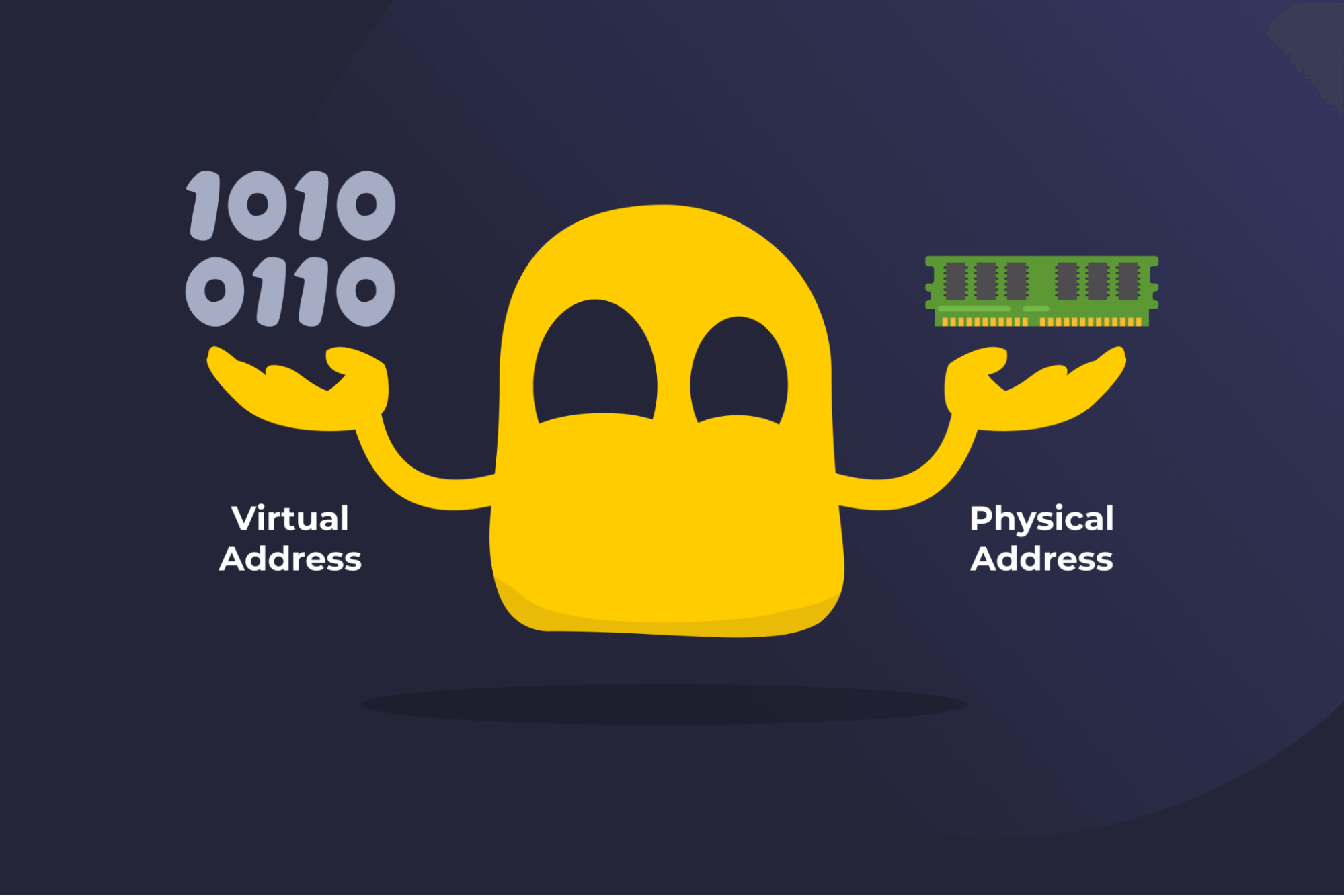Virtual Address

Virtual Address Definition
In computing, a virtual address is a memory address that allows programs to access data. It’s part of a memory management technique called virtual memory: a system that lets each application use more memory than physically available on a device's memory (RAM). The operating system and CPU translate virtual addresses into physical locations in RAM or storage, with the operating system swapping data to disk storage when RAM is full. This ensures applications run efficiently and remain isolated from each other.
How Virtual Addresses Work
- Program requests memory: When a program runs, it asks the operating system for memory, using virtual addresses instead of physical RAM locations.
- Virtual address is sent for translation: The CPU’s memory management unit (MMU) receives the virtual address and prepares to map it to a physical location.
- MMU checks page tables: These are tables created by the operating system that contain mappings between virtual and physical addresses.
- Virtual-to-physical address translation: The MMU uses the page tables to find the physical RAM address that matches the virtual address.
- Handling missing data: If the requested data isn’t in the RAM, the operating system retrieves it from the storage drive’s page file and loads it into the RAM.
- Program accesses the data: The program receives the requested data without knowing its actual location in the physical memory.
Benefits of Virtual Addresses
- Efficient memory management: The operating system can allocate memory dynamically and rearrange physical memory without impacting running programs.
- Crash containment: If a program experiences memory errors, they won’t corrupt or crash the entire operating system.
- Support for large address spaces: Programs can leverage virtual memory on storage drives to use more memory than what’s physically available in the RAM.
- Increased security: Each program has its own virtual address space, so it can’t read or modify another program’s memory.
- Better multitasking: Multiple programs can run simultaneously without interfering with each other’s memory.
Read More
FAQ
A virtual address is a computing term that refers to a memory address which helps a program to access a memory location that doesn’t match the physical RAM location. Virtual addresses allow computer systems to manage memory allocation more efficiently and securely.
Virtual addresses provide several benefits, like allowing operating systems to manage memory more efficiently without affecting running programs. Virtual addresses provide better security because each program has its own virtual address space, which prevents it from reading or modifying other programs’ memory. They also help with performance, as they allow multiple programs to run simultaneously without affecting each other’s memory.
The CPU’s memory management unit (MMU) translates virtual addresses into physical addresses, which adds a small performance overhead. That said, modern CPUs optimize the translation process so that it’s barely noticeable.

 45-Day Money-Back Guarantee
45-Day Money-Back Guarantee